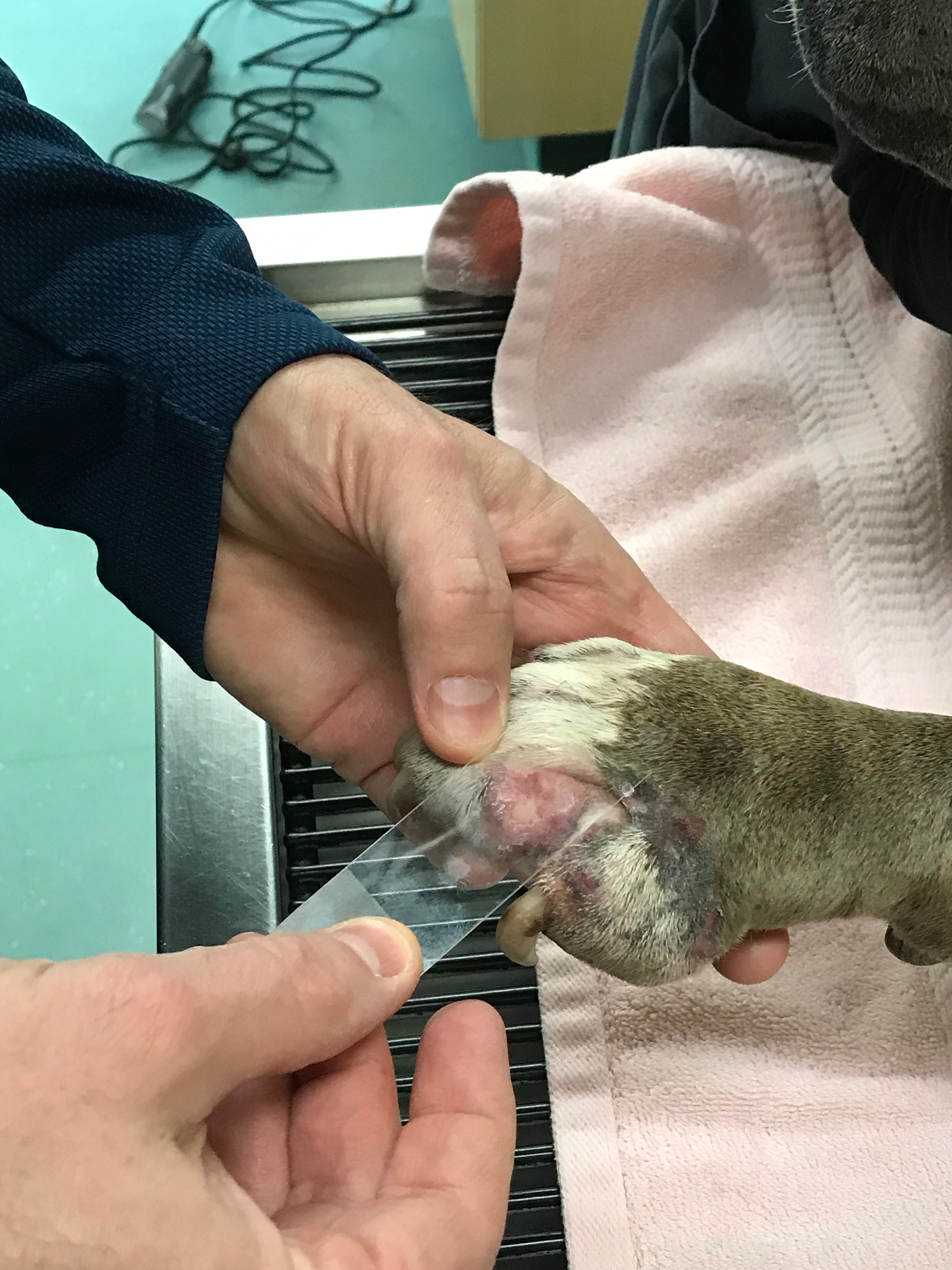Ashley Bourgeois, DVM:
Cytology is allowing us to take samples of the external skin.
It's something that can give us a primary diagnosis. It's something that can pick up on secondary infections. And, it's something that can help us with knowing if the disease or infection is truly resolved. It just gives us such a vast amount of information for such a small, quick sample.
Most of the time we're doing what's called a direct impression smear. So, we take the slide and we can smear it or just press it externally on the skin. Sometimes we use things like Q-tips to get into certain areas like the ear canals. Sometimes we use toothpicks that will allow us to sample things like the claw folds.
So, once we've collected our sample and have it on the microscope slide, we'll put it through a Diff-Quik stain. This is a series of three stains that allow us to enhance the different inflammatory cells and organisms. And once we're able to put the slide on the microscope, put a little bit of oil on it, we can see things like bacteria and yeast that are really important for us to pick up on. So having these stains in our clinic allow us to provide that information to the client right away, rather than having to send the slide out to an outside lab and wait an extended amount of time to get the results back. Before that pet even walks out the door, we know what we need to do with that particular treatment or with that therapy.
I'm really passionate about doing cytology because I can see how much of a difference it makes in my patients. Being able to evaluate how much infection's there, how much inflammation is there can really guide our treatment plan. So making sure we identify those organisms, and actually treat the infection, is going to provide a lot more comfort for that pet.






